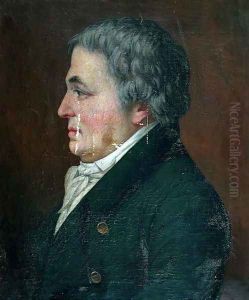Paul Carpentier Paintings
Paul Carpentier was a Belgian artist, not as widely recognized as some of his contemporaries. Born in 1907, he lived through a period of significant change in the world of art, witnessing the aftermath of the impressionist movement and the rise of modernism. Carpentier's work, however, does not fit neatly into any of these dominant art historical categories. Instead, he developed a personal style that drew on various influences, reflecting the eclectic tastes of the mid-20th century.
Carpentier was trained in the traditional fine arts, but as he developed his career, he became interested in the avant-garde movements that were taking Europe by storm. Despite this interest, he remained somewhat detached from the mainstream art scene, choosing to focus on his personal artistic development rather than seeking the limelight. His body of work includes paintings, drawings, and prints, and while he did exhibit during his lifetime, he never achieved the level of fame enjoyed by some of his peers.
During World War II, Carpentier, like many artists, found it difficult to work and to obtain materials. This scarcity, coupled with the general turmoil of the time, had a profound effect on his art, leading to a period where his work reflected the darkness and complexity of the era. In the post-war years, Carpentier's style became more reflective and introspective, often exploring themes of solitude and the human condition.
Paul Carpentier's art might be characterized by its introspective quality and its subtle commentary on the human experience. His use of color and form shows a dedication to exploring the emotional resonance of his subjects. Despite not being a household name, his works are respected by those familiar with them, and they contribute to the rich tapestry of 20th-century Belgian art. Carpentier passed away in 1977, leaving behind a modest but compelling portfolio that continues to be appreciated by art historians and collectors.

